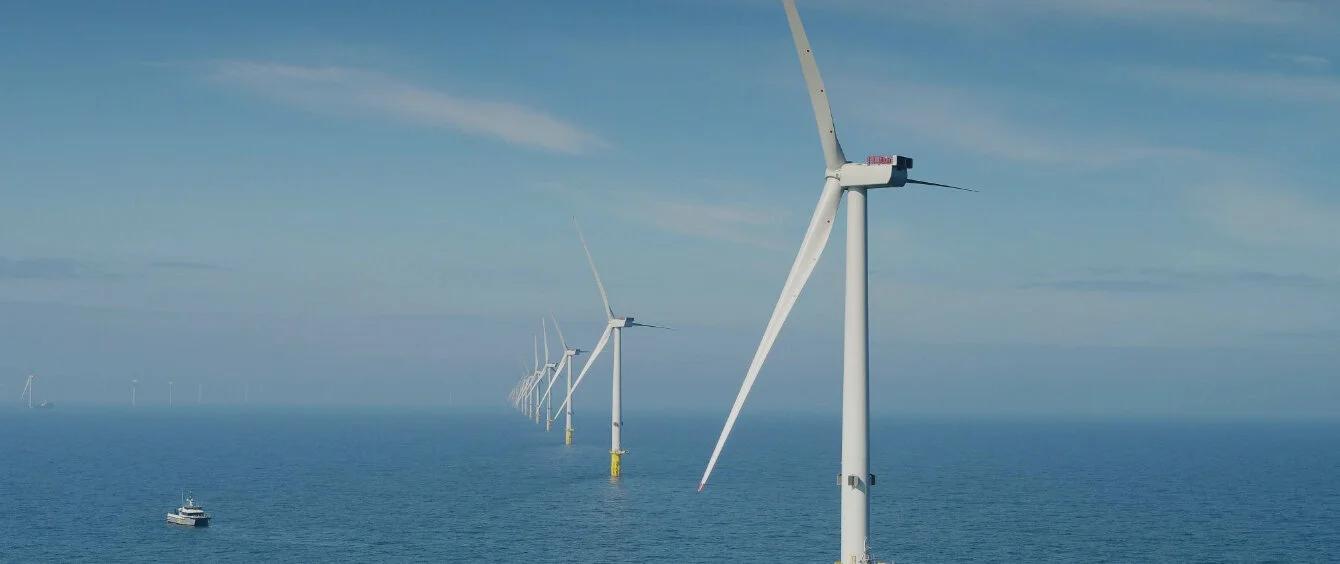
The UK has broken the sound barrier of 25 gigawatts of wind capacity, a feat previously only achieved on European soil by Germany and Spain. A major contribution to this is made by the Triton Knoll offshore wind farm built by RWE, which went into operation at the beginning of the year.
© RWE AG
The UK has moved past a major milestone in the development of its renewable energy resources, with more than 25 GW of wind power connected to the national grid, according to data provided by industry body RenewableUK. Wind now provides nearly a quarter of the country’s total electricity requirements, the data shows.
The project which pushed the UK over the 25 GW mark was RWE Renewables 857-MW offshore Triton Knoll wind farm, which became fully operational in the first half of this year. Only two other European countries, Germany and Spain, have passed this milestone.
Data sets on wind capacity differ, depending on the point of construction at which the capacity is included. The UK government’s DUKES data, for example, shows the UK with 25.7 GW of capacity at the end of 2021, while RenewableUK’s more conservative approach to operational status shows 25.5 GW fully connected and generating power by the end of June this year.
Steady progress needs to accelerate
UK wind capacity has shown a consistent upward trajectory since the first wind farm came online in 1990, but the pace of development has slowed since the record breaking year of 2017, when almost 3.5 GW of new wind capacity was completed. This, in large part, has been the result of fewer onshore wind farms coming into service.
Indeed, since 2018, offshore wind additions have outstripped new onshore wind farms each year. However, new additions in 2020 and 2021, for on- and offshore wind combined, were low relative to the annual additions seen over the preceding decade.
As RenewableUK highlights, wind farm construction needs to increase markedly, if the government’s climate and energy security targets are to be met. The goal of 50 GW of offshore wind by 2030, up from 11.3 GW today, requires annual additions of 4.3 GW each year from this year through and including 2030.
Moreover, the UK’s Climate Change Committee has recommended that the UK increase its onshore capacity from 14.2 GW today to between 22-29 GW by the end of the decade.
Faster permitting needed to increase capacity additions
Revisions to the planning and permitting system are needed to speed up development, says RenewableUK, a recommendation endorsed by a variety of organisations such as WindEurope and the International Energy Agency.
There appears to be no lack of actual projects: Renewables UK puts the pipeline of new UK wind projects at 80 GW offshore and 21.8 GW onshore.
Recent auctions by the UK government for new wind capacity certainly imply greater capacity additions in the years to come, but still not yet at the pace needed to meet the government’s 2030 offshore wind goal or the CCC’s recommended target for onshore wind.
UK wind power now saves more than 30 million tons of CO2/yr
Wind power has come from next to nothing in the last millennium to become the UK’s largest source of renewable energy today, last year generating more power than nuclear and coal combined.
At just over 71 TWh of domestically-generated electricity, the expected annual clean energy generation from wind this year will result in CO2 emission reductions of almost 31 million tons, according to RenewableUK’s calculations.
Nonetheless, more is needed to get on track for net zero for 2050 and ensure energy security as outlined in the government’s recent British Energy Security Strategy.